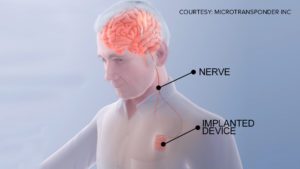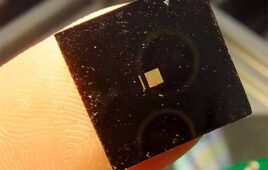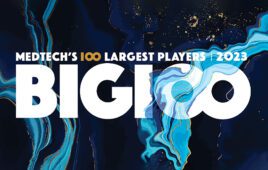
A new clinical trial at The Ohio State University Wexner Medical Center is examining an implanted device that uses vagus nerve stimulation to help stroke patients regain motor function. [Image from The Ohio State University]
Stroke rehabilitation specialists at The Ohio State University are conducting a clinical trial that uses vagus nerve stimulation to improve rehab for stroke patients. Patients are implanted with a vagus nerve stimulator in their chest wall that connects to the vagus nerve in the neck.
The stimulator, called Vivastim, rewires circuits in the brain that control motor function. If a patient correct performs an exercise during therapy sessions, the device stimulates the vagus nerve. The stimulation signals the brain to remember that action.
“The goal is to see if we can improve motor recovery in people who have what is, in effect, a brain pacemaker implanted in their body,” said Dr. Marcie Bockbrader, research physiatrist for the Neurological Institute at The Ohio State University Wexner Medical Center, in a press release. “The idea is to combine this brain pacing with normal rehab and see if patients who’ve been through all of the other usual therapies after a stroke can get even better.”
Stroke occurs when blood flow to an area of the brain is cut off, resulting in a deprivation of oxygen to brain cells. When brain cells lose oxygen, they begin to die and when they die, the abilities of that area of the brain are lost. According to the National Stroke Association, 800,000 people experience a new or recurrent stroke in the U.S. per year.
The Ohio State University’s approach to stroke rehabilitation has shown to benefit about 85% of people who received the stimulation. The researchers suggest that the nerve stimulation is similar to turning on a switch and making the patient’s brain more receptive to therapy.
Researchers at the Cleveland Clinic are also working on a deep brain stimulation for stroke recovery that involves implanting electrodes into the cerebellum section of the brain. The deep brain stimulation electrodes emit small electric pulses while connected to a pacemaker device, helping patients regain motor control.
The study is being funded by Dallas-based Microtransponder, a medical device company that develops the Vivistim device.






